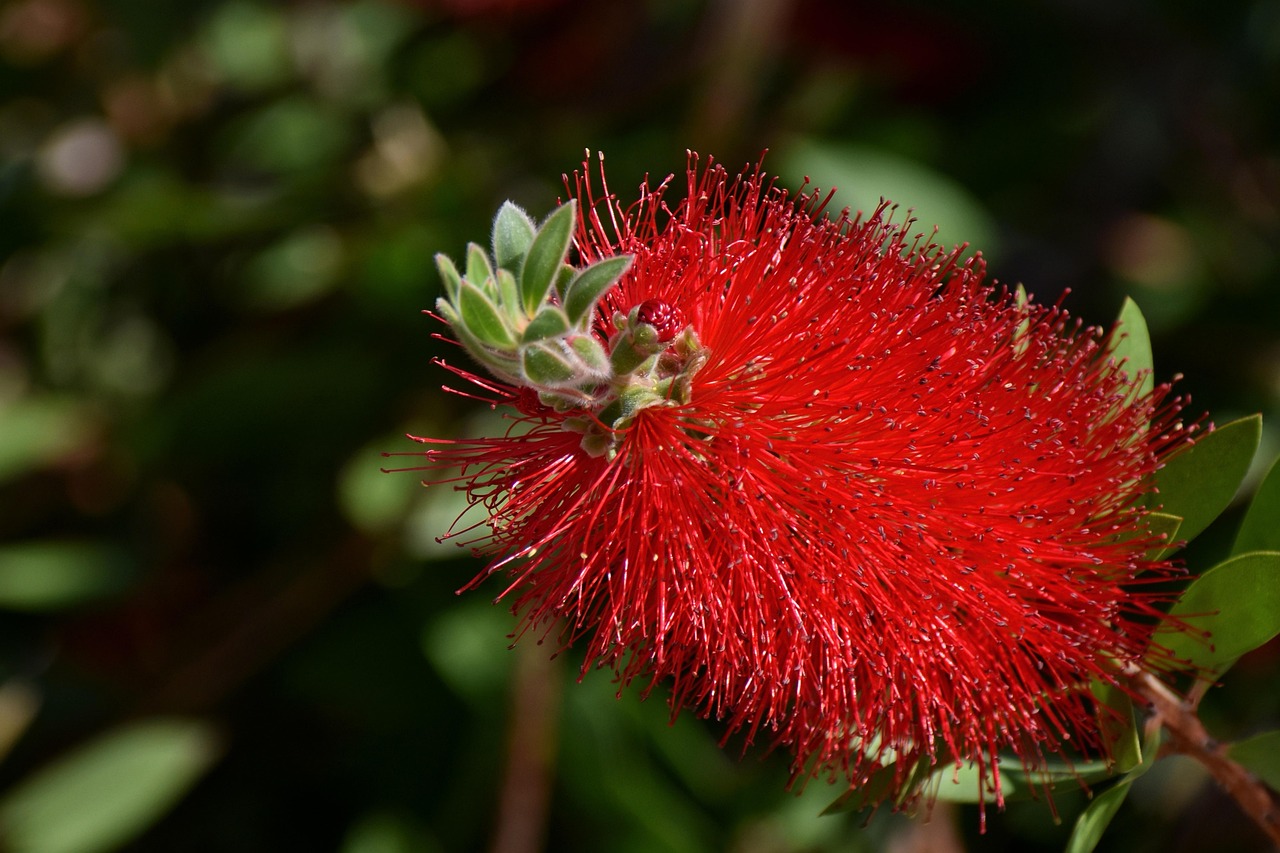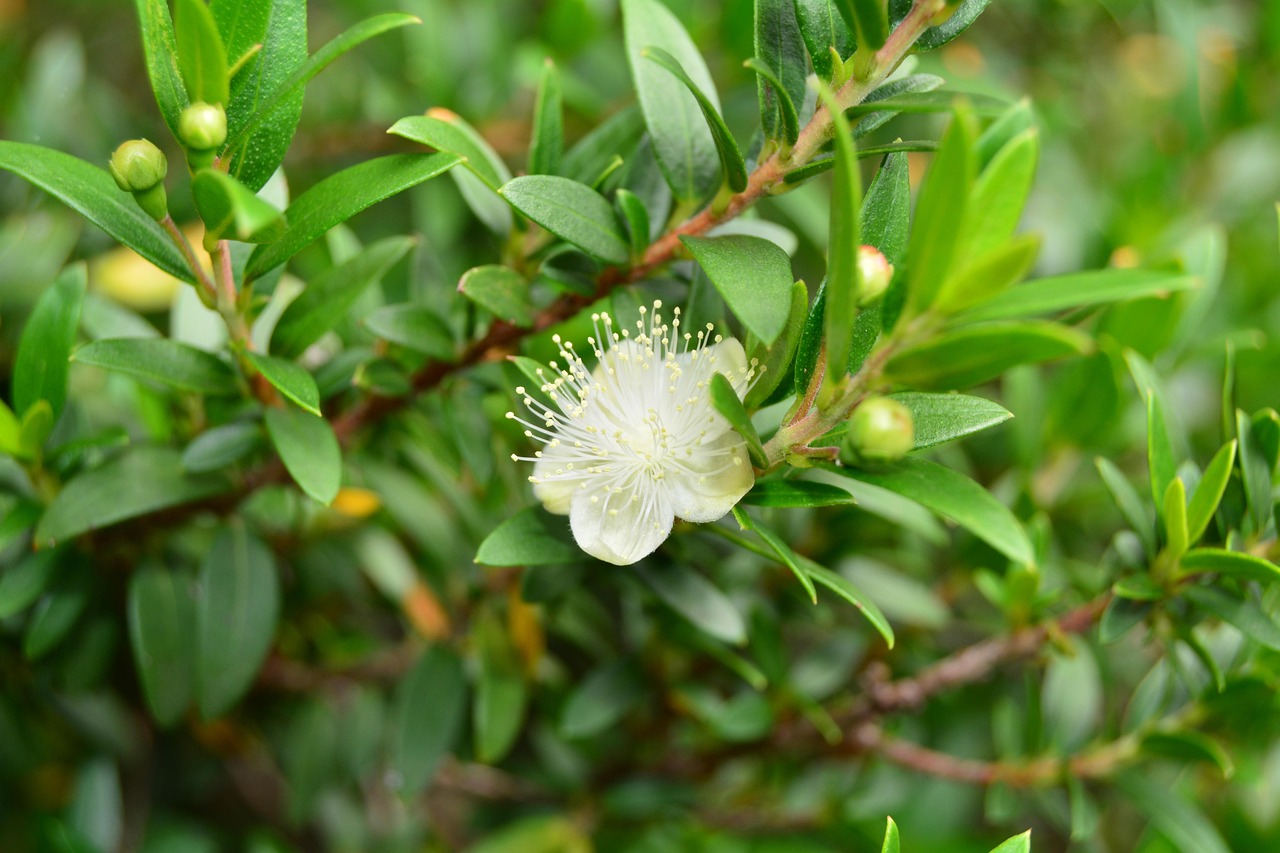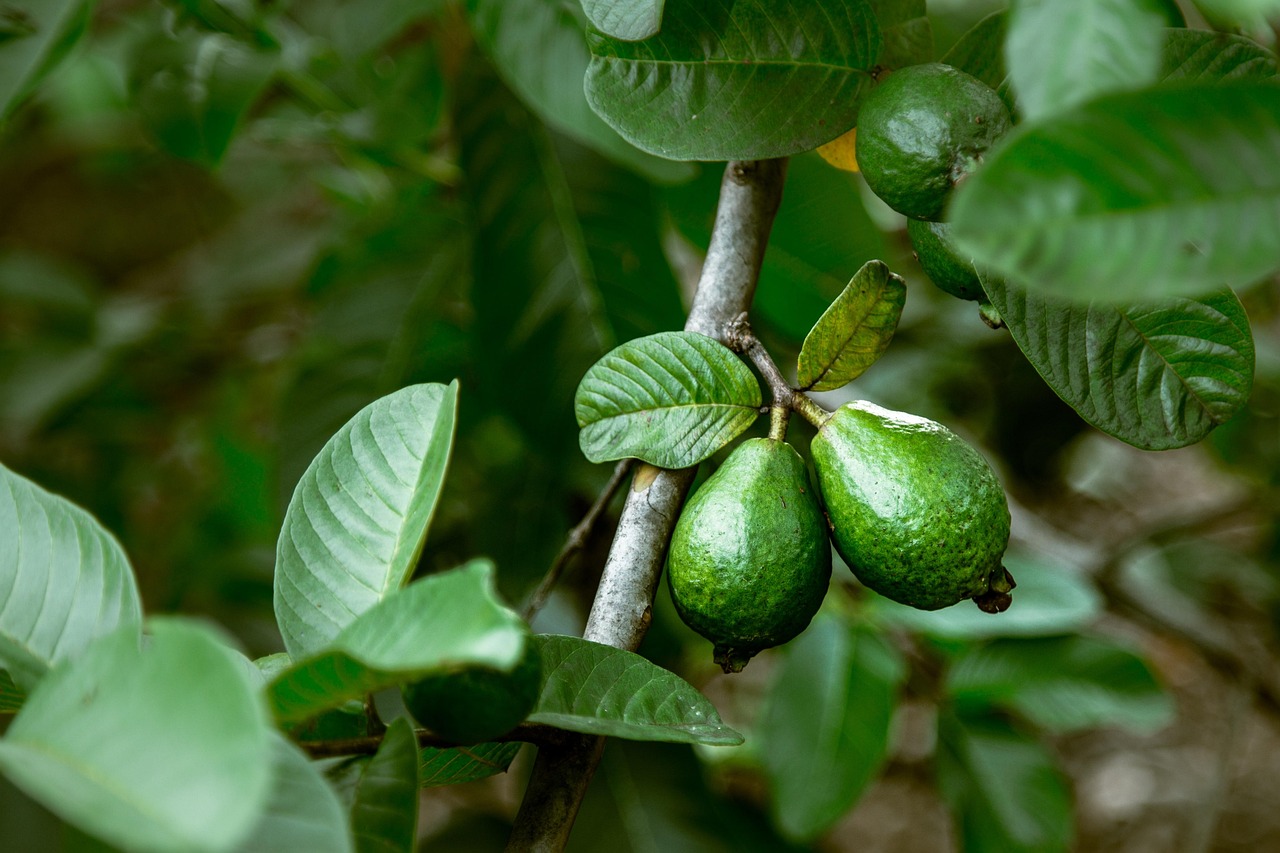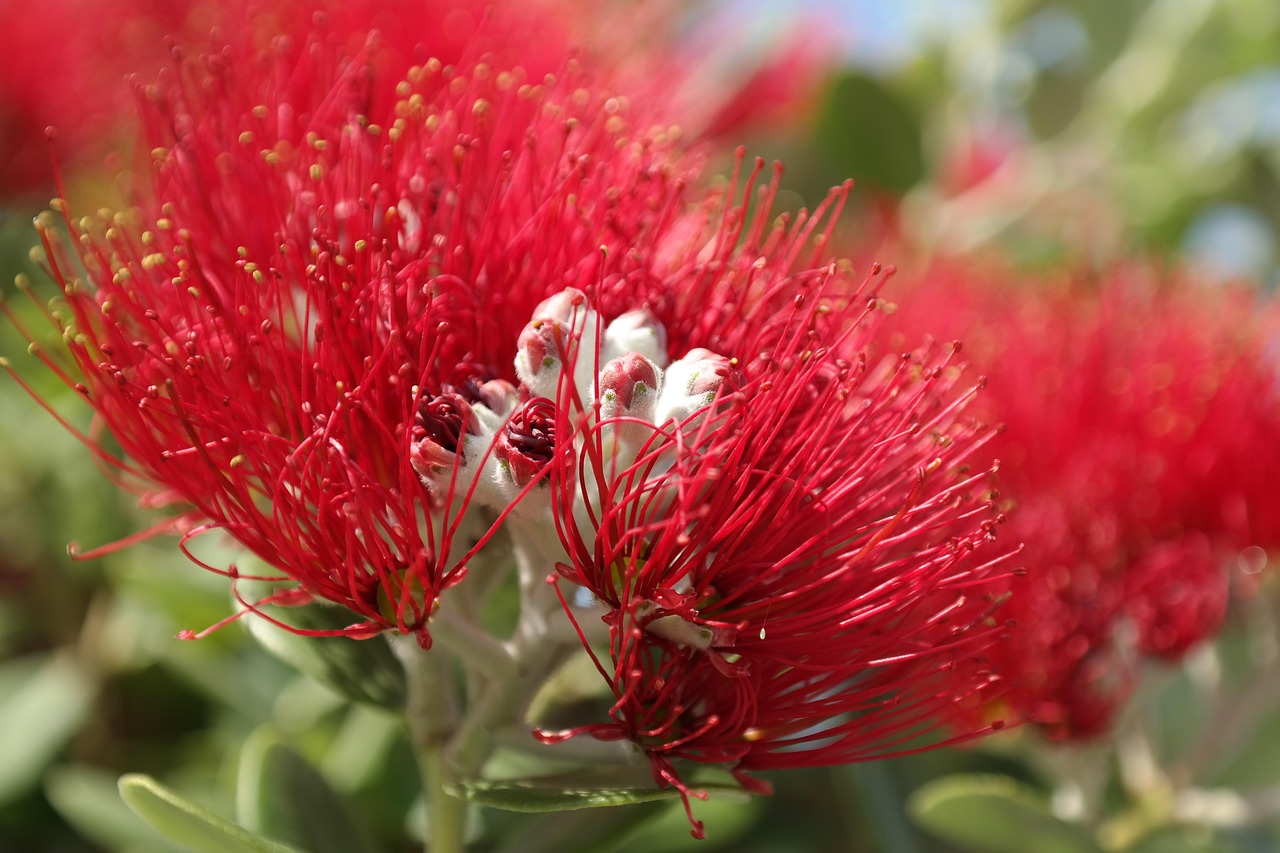Rose Apple: Features and Care
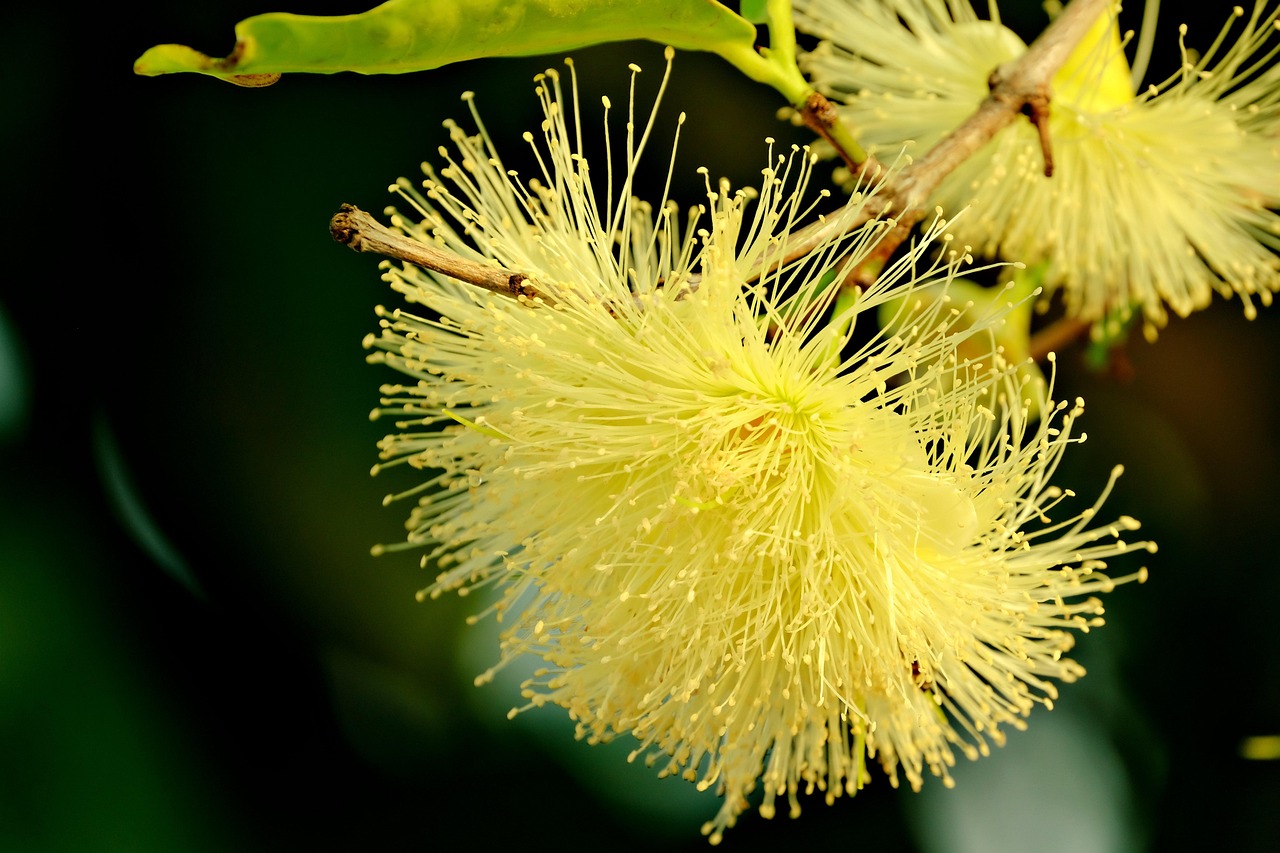
The rose apple is an evergreen tree known for its delicate white or pale pink flowers and aromatic fruit. With its glossy leaves and soft, feathery flowers, it is widely cultivated in tropical and subtropical regions as an ornamental tree. During the blooming season, the long stamens of the flowers create a striking visual effect, adding charm to any garden.
This article provides an in-depth look at the rose apple’s characteristics, cultural significance, historical background, and growing tips.
Basic Information
- Scientific Name: Syzygium jambos
- Family: Myrtaceae
- Native Region: Southeast Asia, India, Malay Peninsula
- Appearance: The tree has glossy, elongated leaves and produces clusters of pale pink or white flowers in spring and summer. Its fruit is round, greenish-yellow, and emits a distinctive fragrance when ripe.
- Blooming Season: Spring to summer
- Fruiting Season: Summer to autumn
Cultural Significance Around the World
The rose apple has cultural importance in many regions due to its fragrant fruit and striking flowers.
In Southeast Asia, it is commonly planted in gardens and around temples, with particular reverence in India, where it is considered sacred. Its delicate flowers symbolize purity and are sometimes used in religious ceremonies. The leaves and fruit’s strong fragrance also make them popular for traditional decorations.
In the Caribbean and Latin America, the rose apple is often planted in home gardens and along streets, valued for its shade as well as its ornamental beauty. Its blossoms are admired, making it a favorite in many gardens.
In Hawaii and Oceania, the flower is sometimes incorporated into traditional leis. Its elegant appearance and pleasant fragrance play an important role in welcoming ceremonies and festive occasions.
Historical Background
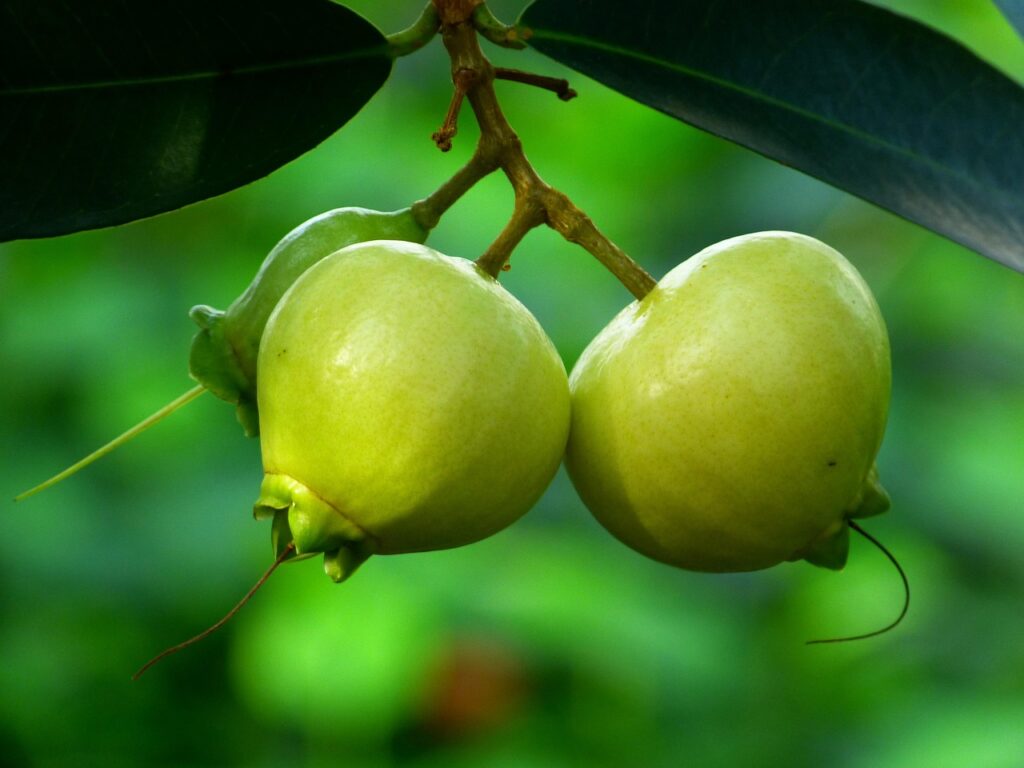
The rose apple has been cultivated in Southeast Asia for centuries and was spread worldwide through trade.
In the 16th century, Portuguese and Spanish explorers introduced it to the Americas, where it quickly became established in the Caribbean and Brazil. It was commonly planted in orchards and gardens, and its presence remains strong in tropical regions.
During the 19th century, British and French colonial expansion brought the tree to Africa and Australia. In Australia, the rose apple became popular in parks and gardens, and in some areas, it even naturalized in the wild.
Today, the rose apple is widely grown in tropical and subtropical regions worldwide, not only for its ornamental value but also for its cultural and historical significance.
Gardening Advice
Although the rose apple thrives in tropical and subtropical climates, proper care is essential for its healthy growth.
Sunlight
Prefers full sun. Adequate sunlight enhances flowering, while partial shade may reduce bloom production.
Watering
Needs consistent moisture. Water regularly during the growing season, ensuring the soil remains slightly moist but not waterlogged.
Soil
Well-drained, fertile soil is ideal. A mix of loamy soil, compost, and sand helps promote healthy growth.
Fertilization
Apply a balanced slow-release fertilizer once a month from spring to summer. Excess nitrogen can promote excessive leaf growth at the expense of flowers.
Pruning
Prune in late winter or early spring to maintain its shape and improve air circulation. Removing overcrowded branches helps prevent pests and diseases.
Cold Tolerance
Sensitive to frost. In colder regions, growing it in a pot and moving it indoors during winter is recommended.
Conclusion
The rose apple is a tropical evergreen tree admired for its soft, feathery flowers and fragrant fruit. Revered in Southeast Asia, commonly grown in gardens in the Caribbean, and introduced to the Americas by European explorers in the 16th century, it has spread across the globe. Today, it is a beloved ornamental tree, deeply connected to various cultures and traditions.
With the right growing conditions, its beautiful flowers can be enjoyed for many seasons, making it a wonderful addition to gardens and parks.

